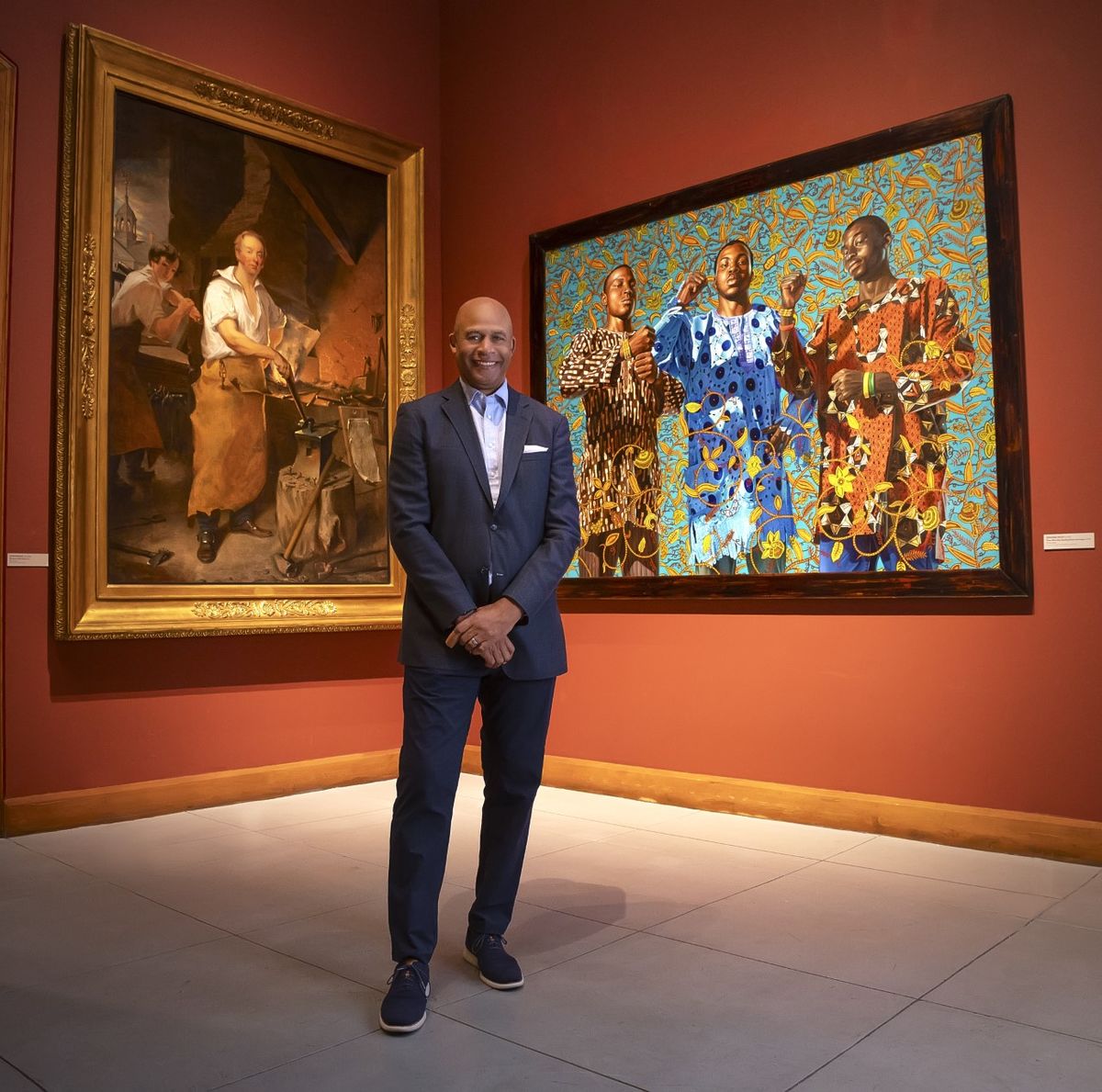
Eric Pryor (MFA ‘92) was recently named the President and CEO of the Pennsylvania Academy of The Fine Arts (PAFA). After receiving his Masters in Painting at Tyler’s Elkins Park campus, Pryor went on to have a storied career as a professional artist, museum curator, and dedicated art administrator. Pryor most recently served as the President of the Harlem School of the Arts, and his impressive career in education continues to be informed by his time spent as a working artist after graduating from Tyler.
How have the first few weeks at PAFA been for you?
"It’s been great. The people have been very warm and very welcoming. I think there’s excitement in the fact that my background is one of a professional artist’s and that my degrees are in fine arts."
What are your goals for this first year as President?
"The most important thing is to do a listening tour to better understand what our community values. I will be working with my leadership team to determine the strategic direction we will be taking. Other than that, we’ll look at our institutional marketing and how to position the brand. That is a major priority."
What was your experience like at Tyler when you were pursuing your MFA?
"I went to the Elkins Park campus, and interestingly enough, I used to have a studio on 5th and Cecil B. Moore and would ride my bike and sit on Temple’s main campus and think, “Why can’t Tyler be here?” It was a great experience – I loved the fact that all of us creatives were up there together. The community was great. There were aspects of it that were also isolating, though, which is why I’d come to the North Philly campus. But I was also in a program called the Future Faculty Fellowship Program, which brought all of us Fellows together, and I met really great people through that."
Why did you choose Tyler over other institutions?
"I applied and had gotten into Yale’s MFA program, but the Future Faculty Fellowship Program is why I went to Tyler. I had full tuition remission and a $10,000 stipend. I understood that when I was done, I wasn’t going to have the shackle of student debt and that there would be the freedom to be an artist when I graduated with my MFA that wouldn’t be stifled by paying back loans."
What did your professional art practice look like?
"I was a painter, and I painted on wood, paper, canvas — a little bit of everything. Interestingly enough, if you were to look up Harlem School of the Arts in the New York Times, one of the photos is of me sitting in front of two huge paintings I did for my thesis show at Tyler. They hadn’t hung anywhere since my MFA exhibition because they were so big. After hanging them at HAS it was great that they were positively received."
What did your decision-making process look like when you were just starting your career? What led you to be a curator and an educator?
"Initially, when I graduated, I was working as a teaching artist around Philadelphia. I was primarily teaching kids, and I was also a substitute teacher for whatever subject when it was needed. Those were great experiences because they showed me so much of the city, and my love for arts education deepened. I was also running a mural project for Brandywine Printmaking Workshop with Allan Edmunds (BFA '71, MFA '75), and his wife Anne Edmunds was working as a consultant with the Bedford Stuyvesant Restoration Corporation, and they were looking for someone to run their center for art and culture. She asked if I had ever thought about applying, and I said sure. I wanted to be in New York at a certain point anyway. I felt like my career as an artist could move more, so I applied and got the job. That was my first art administration job."
How did jobs or experiences that didn’t work out for you inevitably shape the direction your career took?
"After I’d gotten the job at Restoration, I worked for the Visual Art Center of New Jersey, and then I was the Director of the New Jersey State Museum. At that point, I thought I’d be running other museums after that, and it never happened. That was when I realized in that moment who I was with my background as an artist. I’m not coming out of the historical ranks of curators. A world of arts education and performing arts then opened itself up to me, and I was able to run a performing arts education organization. The jobs that didn’t work out — I don’t dwell on that, and I learned that from critiques. There are certain things in critiques that you can hold onto that can make you insecure forever, and there are things that can positively inform how you move forward, and it’s up to you to decide how you deal with that information."
What do you feel is so rewarding about being an art administrator?
"The creative process and the way we think as artists is applicable to the way we build institutions. Taking that approach in recognizing that it’s bigger than just the canvas, the paper, the object-making — it’s about how we think and problem-solve. For a long time, I made art, and I was an administrator. I felt like it was very difficult to try to do both. I was internally grappling with that. A friend of mine said to me, “the way you think as an artist and problem-solve — your institution building will always be an extension of your art.” When she said that, it opened things up for me. I wasn’t trying to dual-exist anymore.
It is extremely gratifying as an administrator to play a small role in helping young people find their voice and agency as creatives."